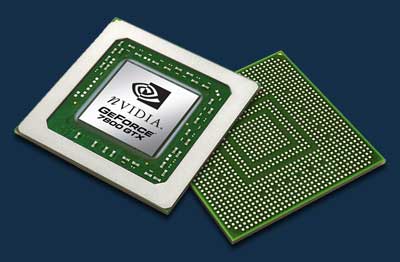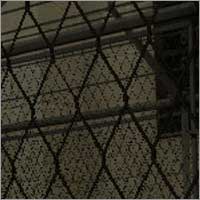
|
Under the Hood: A Close-up Look at the Technology behind the e-GeForce 7800 GTX
The first of a series of articles by EVGA designed to illuminate and expose the various new technologies featured in the newly released e-GeForce 7800 GTX.Unreal image quality while rendered at unbelievable frame rates. 38.4GB/sec of memory bandwidth coupled with fillrates at 10.32Gtexels/sec. Full throttle graphics. But how does the e-GeForce 7800 GTX do it? What's hiding beneath the ordinary exterior that powers the type of mind-numbing statistics this graphics card is capable of? The answer lies in a thin slice of squared silicon measuring one and half inches around, tucked neatly under a heatsink/fan that cools the graphics engine, or Graphics Processing Unit (GPU). Within the GPU, power is generated through a completely redesigned architecture, that when used with NVIDIA's optimized driver set, produces graphics rendering power never before seen in a graphics card.
The Real Truth
Prior to the launch of the e-GeForce 7800 GTX, much was contested regarding the architectural advances the new GPU would possess. Many assumed the e-GeForce 7800 GTX would merely be an e-GeForce 6800 Ultra with added pipelines and higher clock speeds. To put it simply, this is NOT the case.Architecture Advances
The new GPU architecture goes far beyond additional pipelines and increased clock speeds. The new GPU architecture includes internal pipeline units that have been completely redesigned to emphasize lower latency and higher computational capability per clock. Vertex units were reconstructed to accelerate geometry processing, as well as adding a new texture engine to enhance the speed of texture processing, along with newly architected pixel pipelines to deliver incredible per pipe performance. For example, the e-GeForce 6800 Ultra is capable of processing four multiply-add (MADD) operations (MADD is one of the most common operations in 3D graphics) in each pixel pipeline per clock. With the e-GeForce 7800 GTX, eight multiply-add operations are possible in each pixel pipeline per clock, twice as fast as the e-GeForce 6800 Ultra per pixel pipeline, while triangle setup is over 30% faster!Other Improvements
New levels of realistic rendering are made possible through innovative methods of transparent supersampling and multisampling, as well as improvements made in texture and map compression technology. And to further illustrate the power housed within the e-GeForce 7800 GTX, it can process an amazing 165GFLOPs/sec, compared to an Intel Pentium 4 3GHz processor, which can only theoretically process 12GFLOPs/sec, when it comes to computationally-intensive, highly parallel applications. Areas such as computer vision, fluid simulation, image and volume processing, database queries, gravitational force computations, Monte Carlo methods, computational geometry, and even global illumination rendering techniques like ray tracing, photon mapping, and radiosity can benefit immensely.
Normal Antialiasing
Transparent SupersamplingWhat Does It All Mean
If you've sloughed through the past few paragraphs and still feel muddled with techno-babble and assaulted by acronyms, what it really boils down to is this: Utilizing a new GPU architecture that's been built from the ground up, as well as several added features, the e-GeForce 7800 GTX is the most powerful 3D graphics card to date, bar none. In fact, the only way to beat a single e-GeForce 7800 GTX is to pair them together in SLI configuration! Two e-GeForce 7800 GTX working in SLI mode represents the absolute ceiling in 3D rendering potential. With that said, what are you waiting for? Pick one up today, or two, and put aside the fears of the blurry image quality and sagging framerates of previous generation graphics cards in today's games.What's Next
In the next installment, we'll look at the NVIDIA CineFX 4.0 Engine, which is paramount in the GF 7800 GTX's ability to render advanced visual effects for stunning and complex scene rendering. So stay tuned!


